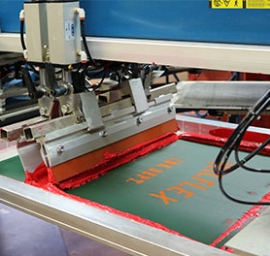Oasis Discharge Tips
What is discharge?
The discharge process Solution Details Discharge is a de-oxygenation process whereby the oxygen molecule of the dischargeable dye is cracked from the dye molecule. This renders the dye invisible. The process of printing and curing discharge inks on dischargeable garments will have variation. You can minimize the variation by monitoring and adjusting the ink, parameters and garments. However, there will always be variation to some degree in printing discharge.
The finished look of a discharged shirt is greatly dependent on the shirt being discharged. Dwell time in the dryer at cure temperature needs to be long enough to drive off all moisture in the image area. Discharge will vary from dye lot number to dye lot number, and by the number of shirts being discharged. Discharge inks will require adjustment if multiple dye lots are used and the overall discharge may appear different.
Softeners used as fabric treatments may affect how the discharge works with the garment. Hydrophobic softeners will resist water-based and discharge inks. Relative or ambient humidity, and the day's temperature and humidity needs to be monitored because these levels will affect the cure temperature and dwell time to drive off all the moisture in the image. Humidity and temperature will also affect the discharge colors on the shirt, and may need to be compensated for as well.
Different dye colors will appear different when discharged. Some dyes will not discharge completely or at all. The ink film must reach cure temperature and remain at cure temperature long enough to drive off all the moisture in the image area. The ZFS Discharge Products contain formaldehyde and have a sulfurous odor. Avient recommends that goods printed with ZFS Discharge are washed or tagged due to the presence of formaldehyde.
Washing prior to packaging will lessen the odor.
Please refer to product information bulletins and precaution statements.
There is a pot life to the ink and it cannot be re-activated once it has been mixed. If mixing at the 8 percent activator-to-base ratio, the addition of more activator will not rejuvenate the base and permit the run to continue. You can use less than 8 percent activator-to-base ratio, but that will weaken the discharge product.

